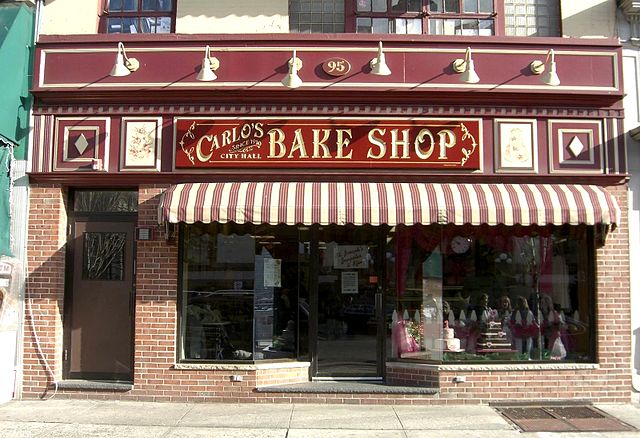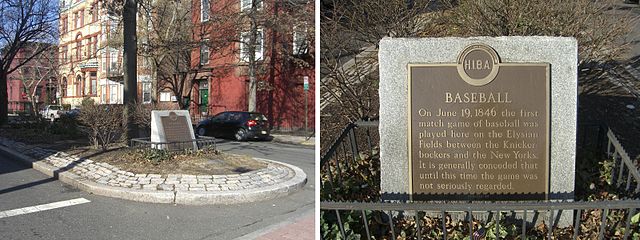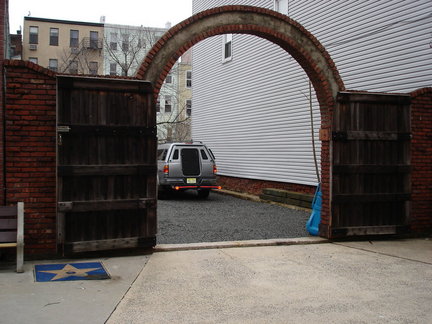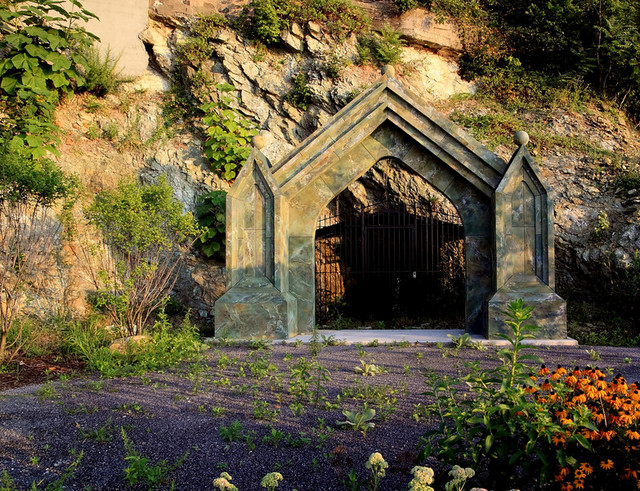Staten Island’s proximity to New Jersey makes day trips to places like Hoboken a snap. In addition to Hoboken’s many restaurants and bars, the waterfront city is home to cultural destinations, bucolic parks, and hidden treasures. Here are five to check out on your next trip!
Carlo’s Bake Shop
 Carlo’s Bake Shop | via Wikipedia
Carlo’s Bake Shop | via Wikipedia
Carlo’s Bake Shop is the location of TLC’s Cake Boss. The bakery was opened by Carlo Guastaffero in 1910 and was acquired by Bartolo Valastro, Sr. in 1964. Stop by and sample the goods while experiencing the real life setting of your favorite cake show!
Elysian Park
 Luigi Novi’s Elysian Field marker | via Wikipedia
Luigi Novi’s Elysian Field marker | via Wikipedia
Elysian Park may be the site where baseball was born! The Knickerbocker Club began using what was then called Elysian Fields in 1845. In 1846, they played the New York Nine in what was the first baseball game between two organized teams.
Frank Sinatra’s Birthplace
 Frank Sinatra’s birthplace | via NJ.com
Frank Sinatra’s birthplace | via NJ.com
On December 12, 1915, Frank Sinatra, Ol’ Blue Eyes, was born in a house at 415 Monroe Street. Although the house has since been demolished, a brick arch and a bronze star in the sidewalk commemorate the great singer and actor.
Hoboken Terminal
 Hoboken Terminal Waiting Room | via Wikipedia
Hoboken Terminal Waiting Room | via Wikipedia
Hoboken Terminal contains one of Hoboken’s grandest interiors. It was opened in 1907 by the Delaware, Lackawanna and Western Railroad. It was designed by architect Kenneth M. Murchison, who also designed the West Side Tennis Club in Forest Hills. Make sure to check out its newly restored clock tower, replacing the original one that was demolished in the 1950s. Sit down in the terminal’s waiting room and take in its 2,000 square foot Louis Comfort Tiffany designed stained glass ceiling.
Sybil’s Cave
 Sybil’s Cave | via Wunderground
Sybil’s Cave | via Wunderground
Sybil’s Cave is Hoboken’s oldest man-made structure. It was created in 1832 by the Stevens Family as a “folly” on their property. The cave went through many lives, from being a popular recreational destination to being a dumping ground for building debris. However, it became infamous for its association with the murder of Mary Rogers, a New York City cigar girl know for her beauty. On July 25, 1841, Rogers disappeared. Three days later, her corpse was discovered floating in the Hudson River, near Sybil’s Cave in Hoboken. Her murder was never solved and even served as the inspiration for Edgar Allan Poe’s “The Mystery of Marie Rogêt,” one of the world’s first detective stories.

